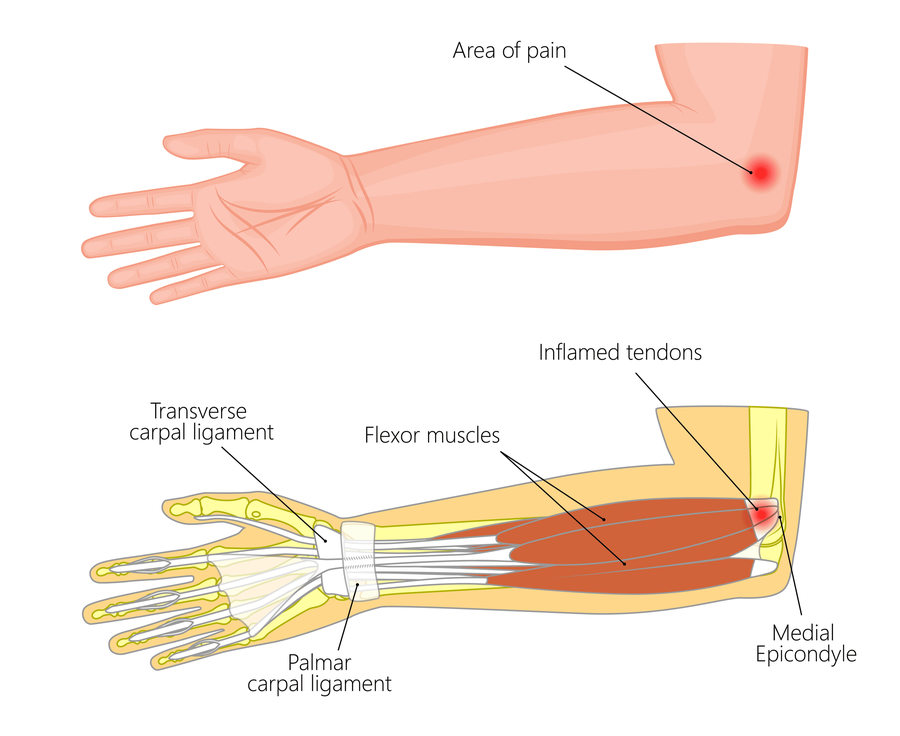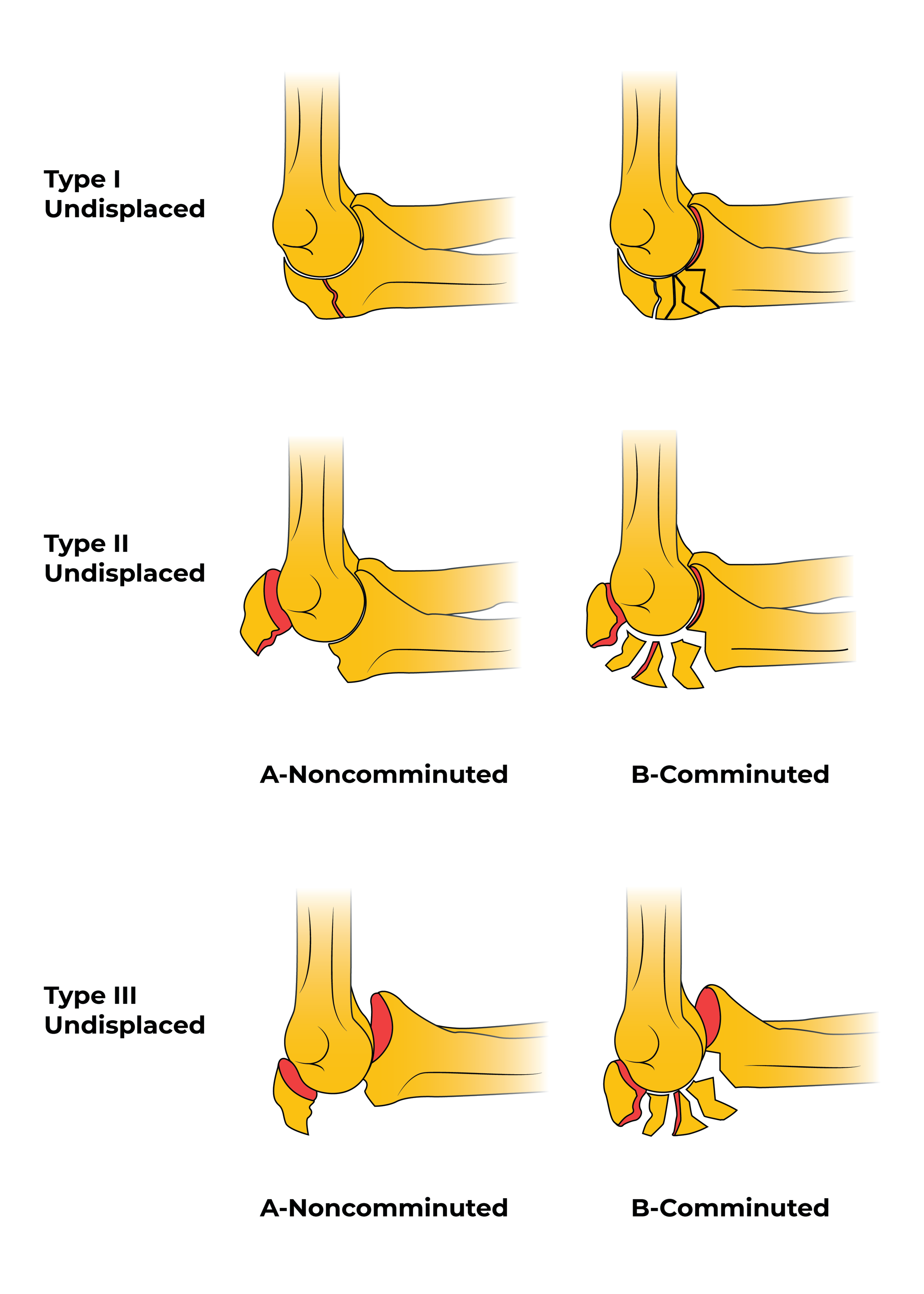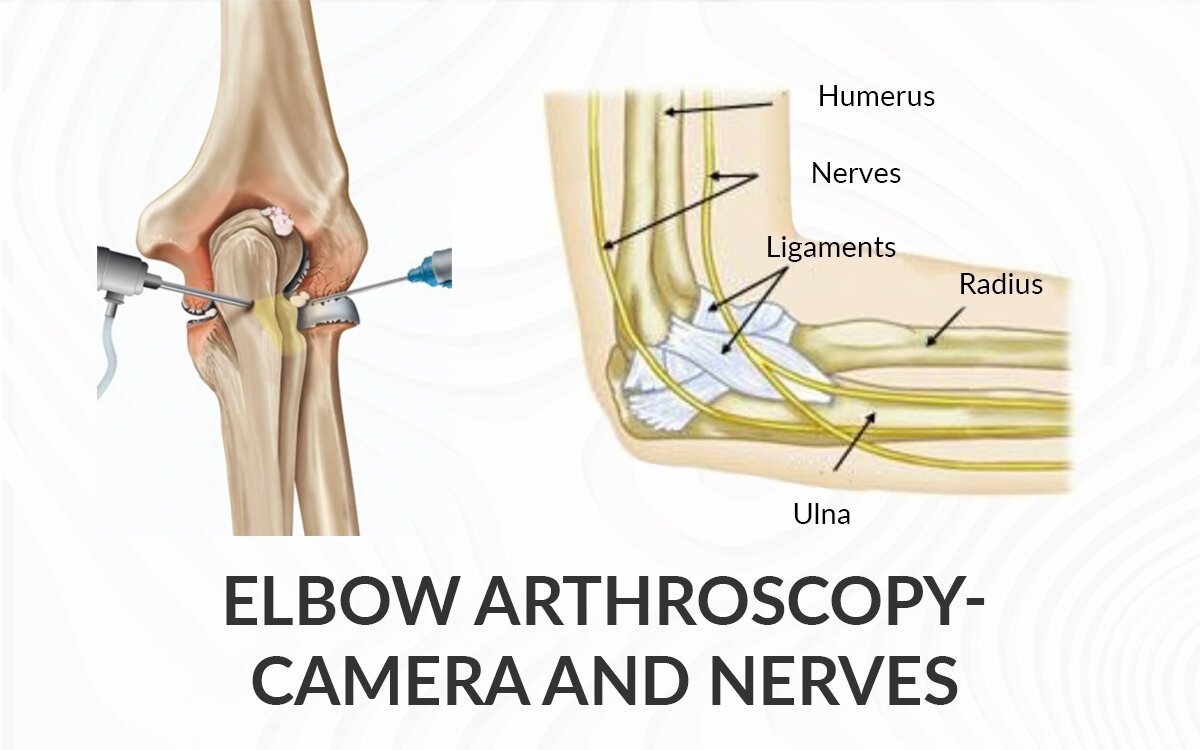Elbow Injuries and Conditions
Elbow pain can stem from a variety of conditions and injuries. Most commonly, repetitive motion, overuse, and sports injuries are causes of elbow conditions and pain. Falling on an outstretched hand is the most common cause of elbow dislocations and fractures.
symptoms
Pain and symptoms can range widely dependent upon the specific elbow injury or condition. Below are a few common symptoms associated with elbow injuries and conditions:
Pain
Tenderness
Stiffness
Limited range of motion
Swelling and warmth
Elbow may look deformed
At Aptiva Health, we offer immediate appointments for elbow injuries and conditions to evaluate, diagnose, and make the appropriate referral for additional treatment based upon your specific elbow injury or condition. We treat these conditions in our General Medicine, Orthopedics, Sports Medicine, Pain Management, and Physical Therapy departments.
Common Elbow Conditions and Injuries:
Elbow Tendonitis (Golfer’s Elbow) - is a condition that causes pain where the tendons of your forearm muscles attach to the bony bump on the inside of your elbow. The pain might spread into your forearm and wrist. Golfer's elbow is similar to tennis elbow, which occurs on the outside of the elbow. It's not limited to golfers. Tennis players and others who repeatedly use their wrists or clench their fingers also can develop golfer's elbow.
Elbow Tendonitis (Tennis Elbow) - (lateral epicondylitis) is a painful condition that occurs when tendons in your elbow are overloaded, usually by repetitive motions of the wrist and arm. Despite its name, athletes aren't the only people who develop tennis elbow. People whose jobs feature the types of motions that can lead to tennis elbow include plumbers, painters, carpenters and butchers. The pain of tennis elbow occurs primarily where the tendons of your forearm muscles attach to a bony bump on the outside of your elbow. Pain can also spread into your forearm and wrist.
Elbow Osteoarthritis - occurs when the cartilage surface of the elbow is worn out or is damaged. This can happen because of a previous injury such as elbow dislocation or fracture. Most commonly, however, it is the result of a normal wearing away of the joint cartilage from age and activity.
Elbow bursitis - occurs in the olecranon bursa, a thin, fluid-filled sac that is located at the boney tip of the elbow (the olecranon). There are many bursae located throughout the body that act as cushions between bones and soft tissues, such as skin. They contain a small amount of lubricating fluid that allows the soft tissues to move freely over the underlying bone.
Elbow Sprain - a sprain is an injury to the ligaments around a joint. A ligament is a band of tissue that connects bone to bone. The ligaments in your elbow help connect the bones of your upper and lower arm around your elbow joint. When you sprain your elbow, you have pulled or torn one or more of the ligaments in your elbow joint.
Elbow Dislocation - is when the joint surfaces of an elbow are separated causing an elbow dislocation. Elbow dislocations can be complete or partial, and usually occur after a trauma, such as a fall or accident. In a complete dislocation, the joint surfaces are completely separated. In a partial dislocation, the joint surfaces are only partly separated. A partial dislocation is also called a subluxation.
Elbow Fracture - or an olecranon (oh-LEK-rah-nun) fracture is a break in the bony "tip" of the elbow. This pointy segment of bone is part of the ulna, one of the three bones that come together to form the elbow joint. The olecranon is positioned directly under the skin of the elbow, without much protection from muscles or other soft tissues. It can break easily if you experience a direct blow to the elbow or fall on an outstretched arm. A fracture can be very painful and make elbow motion difficult or impossible.
Treatment
Ankle injuries and conditions can be diagnosed by our General Medicine Department, Sports Medicine Department, or Orthopedic Department, although non-physician professionals trained to diagnose and manage these injuries, such as in our Physical Therapy Department, are also equipped to diagnose and treat elbow injuries and conditions.
During the physical examination, the healthcare professional will palpate the elbow area and ask about the degree of pain or tenderness. The patient will be asked to move the injured area to test its range of motion as well.
Depending on the suspected injury and level of pain or disability, the doctor may take X-rays to rule out any broken bones. While some broken bones are evident on an initial X-ray, some fractures (e.g., a simple fracture of the wrist or hairline fracture in the foot) may not be noticeable until a few days later, once healing of the injury has begun.
Additional diagnostic imaging tests may be ordered to determine soft-tissue damage. These may be ordered during the initial visit or after a period of treatment is ineffective, and include the following.
Magnetic resonance imaging (MRI): This is often used for diagnostic imaging of muscle injuries, joint damage, sprains, fractures, and head injuries sustained during sports. MRIs use radio waves within a strong magnetic field to examine musculoskeletal structures, including bones, tendons, muscles, ligaments, and nerves. At Aptiva Health, we offer on-site MRI.
Ultrasound: Useful for assessing tendon damage, in an ultrasound, sound waves take real-time images of superficial soft tissues. During an ultrasound, the radiologist may ask you to move the joint to see how motion affects the tendon.
In addition to a comprehensive physical examination and diagnostic imaging, the doctor will likely start with conservative treatment for most elbow injuries and conditions in the form of medication management and physical therapy.
PHYSICAL THERAPY
Strengthening the muscles around your elbow will make it more stable. Your doctor may recommend physical therapy or different types of strengthening exercises based on the specific condition that is causing your pain.
If you are physically active or practice a sport, you may need exercises to correct movement patterns that may be affecting your elbow and to establish good technique during your sport or activity. Exercises to improve your flexibility and balance also are important.
INJECTION THERAPY
In some cases, your doctor may suggest injecting medications or other substances directly into your joint. Examples include:
Corticosteroids. Injections of a corticosteroid drug into your knee joint may help reduce the symptoms of an arthritis flare and provide pain relief that may last a few months. These injections aren't effective in all cases.
Hyaluronic acid. A thick fluid, similar to the fluid that naturally lubricates joints, hyaluronic acid can be injected into your elbow to improve mobility and ease pain. Although study results have been mixed about the effectiveness of this treatment, relief from one or a series of shots may last as long as six months.
Platelet-rich plasma (PRP). PRP contains a concentration of many different growth factors that appear to reduce inflammation and promote healing. These types of injections tend to work better in people whose elbow pain is caused by tendon tears, sprains or injury.
Stem cell injections. The cartilage covering the ends of the bones enables the bones to glide smoothly against one another with only slight friction. Osteoarthritis causes damage to the cartilage and leads to increased friction — resulting in pain, inflammation, and ultimately, a loss of mobility and function. The goal of stem cell therapy is to use the body’s own healing mechanisms to help repair and slow the deterioration of body tissues, such as cartilage.
Stem cell therapy for the elbow aims to:
slow and repair damaged cartilage
decrease inflammation and reduce pain
possibly delay or prevent the need for surgery
In simple terms, treatment involves:
taking a small amount of blood, usually from the arm
concentrating the stem cells together
injecting the stem cells back into the elbow
ORTHOVISC® injections. ORTHOVISC® is a viscous (thick) sterile mixture made from highly purified hyaluronan from rooster combs. Hyaluronan is a natural chemical found in the body. High amounts of hyaluronan are found in the joint tissues and in the fluid that fills the joints. The body's own hyaluronan acts like a lubricant and a shock absorber in the joint. It is needed for the joint to work properly. When you have osteoarthritis, there may not be enough natural hyaluronan in the joint, and the quality of that hyaluronan may be poorer than normal. ORTHOVISC® is given in a shot (injection) directly into the elbow joint. ORTHOVISC® is used to relieve elbow pain due to chronic tennis elbow. It is used for patients who do not get adequate pain relief from simple pain relievers like acetaminophen or from exercise and physical therapy.
SurGICAL INTERVENTION
If conservative modalities and injection therapy fail to adequately treat the elbow injury or condition, surgery may be warranted. Below are a list of commonly performed elbow surgeries at Aptiva Health.
Synovectomy
This procedure removes the synovium – the membrane lining the joint. In a healthy elbow, the synovium produces a lubricating fluid, but in rheumatoid arthritis (RA) and other forms of inflammatory arthritis, the synovium becomes inflamed, eventually eroding cartilage and causing pain and swelling. Removing the synovium temporarily stops this process. Rehabilitation takes at least two months.
Arthroscopic Debridement
This technique removes bony growths in the joint along with any loose bits of bone or cartilage. In some cases, the upper end (or head) of the radius (a bone in the forearm) is also removed. Debridement is used for posttraumatic and primary osteoarthritis (OA) in the elbow. Recovery time – between 12 and 24 weeks (including rehabilitation) – depends on how the procedure is performed and the age of the patient.
Elbow Interpositional Arthroplasty
The goal of this procedure is to relieve pain that occurs when bone surfaces rub together. The ends of the bones are reshaped, and a small section of the patient’s Achilles tendon or other soft tissue is fitted between the joint surfaces. Recovery time, including healing and rehabilitation, can be up to four months.
Total Elbow Arthroplasty or Replacement
Similar to hip or knee replacement, this surgery replaces damaged parts of the elbow with artificial components. A linked implant consists of two metal stems – one in the humerus and one in the ulna – joined by a cobalt-chrome hinge pin that articulates with the joint. In an unlinked prosthesis, the humeral and ulnar components aren’t mechanically joined, relying instead on the surrounding tissue for joint stability. Linkable implants give the surgeon the option of leaving the implant linked or unlinked, depending on what’s found during surgery. Average recovery time is a minimum of 12 weeks.
Overall Considerations for Elbow Surgery
Now that patients have medications like disease-modifying antirheumatic drugs (DMARDs) and biologics, they are living longer and are more active than in the past, and the joints adjacent to their elbows are healthier.
*Some of the information on this page related to elbow surgeries was originally published on the Arthritis Foundation website.












